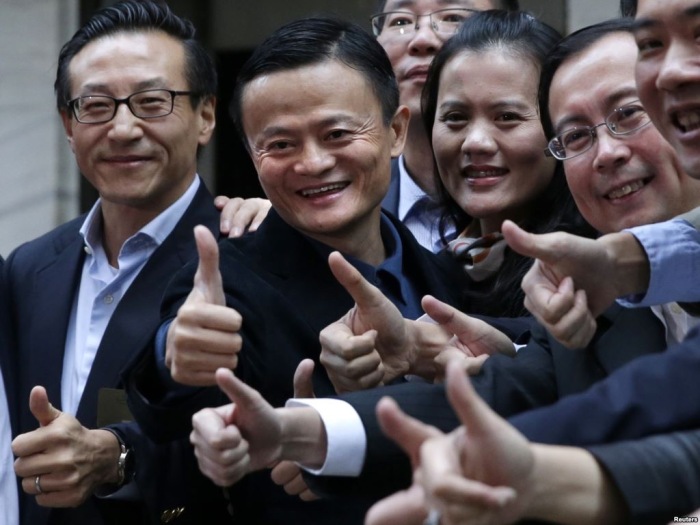
You’re kidding, right? How can this stock (BAB:US) get a huge pop on the first day? That on a valuation that some people were already considering rich? It started at USD 92.7 at 11:53, popped to USD 99.4 7 minutes later and ended the day at USD 93.89, on the first day!!
The FT had an excellent background story that should be enough to lay greedy hearts to rest:
Alibaba.com, the online business which had been listed to great fanfare in Hong Kong in 2007, was being delisted nearly five years later.
…The business plan for Alibaba.com, a trade website connecting Chinese exporters with foreign customers, had not worked, but a new economic opportunity was emerging. China’s economy was turning from an investment-driven export machine into a liberalising, consumption-driven economy. Alibaba had a chance to be at the centre of it.”
That’s the hope everyone is buying into. But is that going to happen fast enough and in great enough rates to justify BABA valuations? And where is the guarantee that this company will be at the center of it all?
… Total gross merchandise value traded on the two websites increased from Rmb131bn in the three months to end June 2011 to Rmb501bn in the three months to the end of June 2014.”
But that’s not as rosy as it sounds:
…some experts question the numbers Alibaba has published on gross merchandise value.
Anne Stevenson-Yang, the founder of J Capital Research in Beijing, said the rapid growth in Alibaba’s GMV, which it said rose 63 per cent from 2012 to 2013, is not supported by evidence. A study by J Capital of Chinese publicly listed retail companies, meanwhile, revealed a growth rate not exceeding 6 per cent, and online sales were growing slower than offline.”
Some believe ecommerce as a whole is overstated in China. Alibaba’s estimates of its own size put the total value of the ecommerce market at $300bn last year, which is larger than the US ecommerce market. Meanwhile, the size of China’s GDP is just over half that of the US and consumption as a percentage of GDP is under half that of the US.
…Alibaba has also gone on a shopping spree in the past year, spending over $5bn to buy stakes in more than 100 companies, such as Autonavi, a mobile GPS mapping software and UC Web, a popular mobile browser.”
…Some of the sons and daughters of China’s ruling elite managed shareholdings stakes via a team of banks and investment firms that took small stakes in 2012 that are now worth billions of dollars: Boyu Capital, Citic Capital Holdings and CDB Capital, the China Development Bank’s private investment arm.”
…Due to restrictions on foreign ownership, investors in China’s technology companies do not actually own shares in the license-holding company but in an offshore registered VIE, or variable interest entity, that simulates ownership via a series of contracts and directs cash flows to investors.
That presents two nightmare scenarios:
- insiders could make off with the company’s assets by simply removing them from the VIE; or
- China’s courts, which have turned a blind eye to the practice for more than a decade, could suddenly strike down the structure
The first variant is especially acute given Alibaba’s history with Alipay. Add to this the complicated shareholding structure and the risks are obvious.
I think I’ll pass…

 This is a much older story, first breaking in late September that has since gone into silent mode — probably as the deal-making is done or is killed by the majority owner. Essentially, the 150-year old trader Louis Dreyfus Commodities is hoping to reinvent itself from a flow-trader agency trading commodities to someone who can bet its own balance sheet.
This is a much older story, first breaking in late September that has since gone into silent mode — probably as the deal-making is done or is killed by the majority owner. Essentially, the 150-year old trader Louis Dreyfus Commodities is hoping to reinvent itself from a flow-trader agency trading commodities to someone who can bet its own balance sheet. 



 A short view of China is not a new thing for me, but I’ve always been cautious about getting into that particular trade because of the surprises it can
A short view of China is not a new thing for me, but I’ve always been cautious about getting into that particular trade because of the surprises it can 

You must be logged in to post a comment.